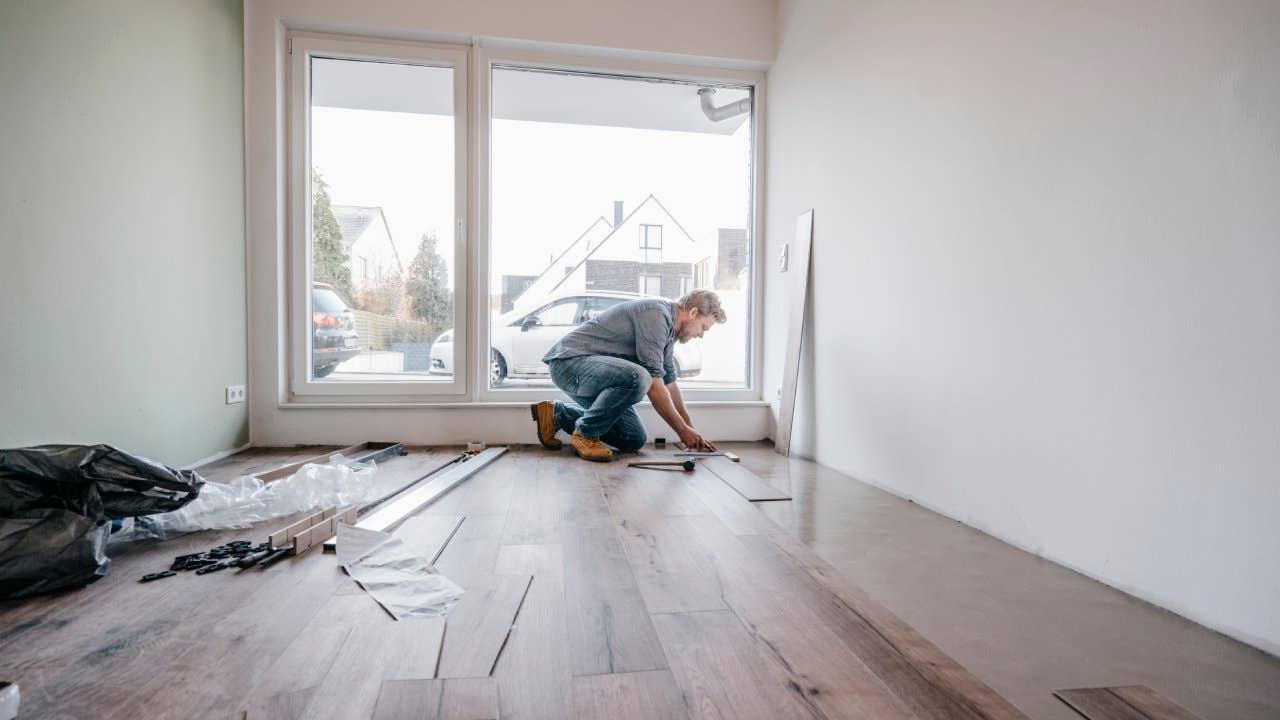What is the 70% rule in house flipping?

The Bankrate promise
At Bankrate we strive to help you make smarter financial decisions. While we adhere to strict , this post may contain references to products from our partners. Here's an explanation for .
Flipping a house requires a lot of work, and a lot of money. There’s the initial investment in the property itself, plus the time, sweat and cash it takes to make the necessary improvements. It’s all worth it if you can pocket a big chunk of change on the sale — but, of course, it all hinges on being able to sell it for enough to actually turn a profit.
That part can get tricky. House flipping comes with some guesswork: How much will repairs cost? Will there be any unexpected expenses? How much will the house ultimately sell for? To help answer some of these questions, many flippers turn to the 70 percent rule, a guideline that helps estimate how much you can spend on a flip and still make money on the sale. Here’s a closer look.
How house flipping works
You’ve probably seen enough HGTV to have a general idea of what it means to flip a house. Buy a bargain-priced property that needs work, fix whatever needs fixing and then sell it for a profit: Simple, right?
It can be, if you find a house for a great price that needs only basic, straightforward repairs. But that requires a lot to go right. And if you’ve ever taken on a DIY project at home, you can probably guess that renovations require you to expect the unexpected. You could stumble across a major plumbing problem or a foundation issue. You could finish the house right as the market takes a dip, leaving you paying for things like utilities, home insurance and property taxes while you wait to find a buyer.
Ultimately, house flipping is a lot more complicated — and riskier — than it looks on TV. The 70 percent rule can help hopeful flippers gauge whether a property is worth the risk.
What is the 70% rule?
This rule of thumb helps you determine the maximum amount you should spend to buy the house you want to flip. Put simply, the 70 percent rule states that you shouldn’t buy a distressed property for more than 70 percent of the home’s after-repair value (ARV) — in other words, how much the house will likely sell for once fixed — minus the cost of repairs.
For example, let’s say Sofia is thinking about buying a fixer-upper in an up-and-coming neighborhood. Good-condition homes of a similar size on the same street have sold for around $300,000. She talks to a local Realtor, who confirms that, if the house were in good condition, it would likely sell for around $300,000. So Sofia pins her ARV at $300,000.
After getting a home inspection, Sofia learns the house needs some electrical work. She estimates $2,000 for that, plus $40,000 for the cosmetic fixes she plans to make. Adding a little padding to be safe, she estimates the total cost of repairs at $45,000.
Now, Sofia can use the 70 percent rule to figure out how much she should pay for the house. 70 percent of $300,000 is $210,000. Setting aside $45,000 for repairs, she decides to make an offer of $165,000 on the house.
If everything goes according to plan, Sofia would pocket $90,000. But the 70 percent rule is just a guideline, not a guarantee — she might find hidden issues that add another $10,000 to her repair costs. Or the market might cool off so that she can only sell for $280,000. Now, Sofia will only make $60,000. Still, because she estimated wisely with the 70 percent rule, she’ll make a decent profit on the flip.
Determining after-repair value
For the 70 percent rule to really work, you need to start with an intelligent guess at a property’s after-repair value.
If you’re not a pro flipper who can estimate repairs in your head, you’ll probably want some professional help. To guess at the cost of repairs, a home inspection is your best bet. This means having a pro look at the house and tell you what kinds of problems it has, whether minor (an easily fixable leak, for example) or major (the big expense of needing a whole new roof). The inspector can also clue you in to potential pest problems, the state of the foundation and more.
Armed with your home inspection report, you can roughly calculate the cost of the repairs you’ll need to complete to flip the house. You may want to get estimates from professional plumbers, roofers or electricians, or use a website that estimates repair costs for you (like Repair Pricer).
To estimate how much you’ll ultimately be able to sell the house for, talk with a local real estate agent. They understand the market and can help you estimate how much a nicely renovated house in that neighborhood would go for. Looking at comps — how much other, similar homes in the area have recently sold for — can also help you estimate ARV.
Bottom line
The 70 percent rule can help house flippers avoid overspending on a property and ending up in the red. It’s only a guideline, though, not a guarantee — you should still take the time to talk to a local real estate professional to understand the market before you buy, and build extra money into your budget for unexpected surprises.
Related Articles



